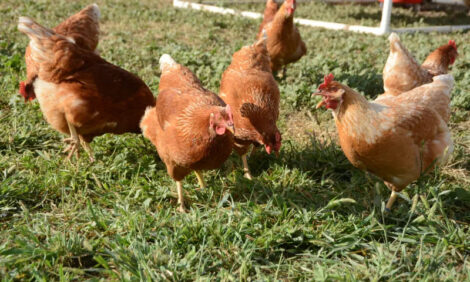



Traceability and Quality to Meet Consumer Expectations
Consumers are expecting more from the products they eat than they used to, writes ThePoultrySite Senior Editor, Chris Harris.They expect they food to be safe and they expect it to be produced to exacting standards, Paul van Geldorp, Head of Unit of Bilateral International Relations at the European Commission's Health and Consumers Directorate General, told the recent World Meat Congress in Cape Town, South Africa.
He said the consumers now not only want safety, quality and taste but also animals reared to ethical values and they want respect for the environment and animal welfare.
Mr van Geldorp said that the EU, by developing quality and traceability systems and by including them in the White Paper on food safety, was endeavouring to make the market more effective.
He said that the traceability systems that had been put in place were largely management tools including inspection and certification and a means to manage food safety incidents and disease control programmes as well as to manage livestock support programmes, quality assurance programmes and the implementation of World Trade Organisation sanitary and phytosanitary agreements.
Effective traceability systems also help to prevent food fraud.
The systems were born out of crises that had arisen in the food industry and had jeopardised the EU's internal market structure.
Principles of Identification
They were all essentially based on the principles of identification, record-keeping and an integrated information structure.
In the EU, the elements of traceability of live animals include:
- registration of holdings or herds, with unique registration numbers
- approval of holdings depending on the health situation
- holding registers, number of animals, identification of animals, dates of birth, details of origin and destination, details of procedure, death, movements medical treatments
- identification of animals (depending on the species)identification must be individual
- registration of animals
- movement document
- transport requirements
- central register and communication - national central data bases.
Since the development of the traceability systems in the EU following the crises of events such as the outbreaks of BSE in the 1990s and the Foot and Mouth Disease outbreak in the UK in 2001, both the World Animal Health Organisation (OIE) and Codex Alimentarius have developed standards for traceability.
Mr van Geldorp said that some countries look on traceability systems as an export opportunity for the meat and animal products, but he added that just having a traceability system does not guarantee quality.
"Essentially, all the legislation is the same. You want to fallow the food through all the parts of production," said Mr van Geldorp.
"And you have to be sure you can manage food safety in a crisis."
Traceability and Trade
He said that while many countries now look to traceability systems as a means of restricting trade, others such as Chile and Namibia have adopted traceability as a quality measure.
But, Mr van Geldorp said that while countries exporting to the EU cannot be forced to follow food law within their own countries, it is critical that the importer should know where the products being imported come from. He said that traceability is a long-term food safety concern and that to export to EU countries must guarantee systems that are at least equivalent to those imposed in the EU.
He added that the critical issue is whether traceability is seen as a food safety requirement, so that premises from exporters have to be approved, and requirements such as beef labelling and residue testing and minimum levels have to be maintained.
He said that to enforce food safety controls, the measures have to be science-based and based on risk assessment as a WTO SPS measure.
And he added that both the OIE and Codex Alimentarius are working of the global problem of seeing and maintaining standards of traceability and food safety by providing guidance.
Prevention Better Than Cure
Mr van Geldorp said that the new Animal Health Strategy for the European Union (2007-2013) is based on the principle that prevention is better than cure.
He said there is a traceability framework that allows traceability across member state borders and is based on electronic identification and improved information exchange.
He said that in the future national identification databases need to be interchangeable and electronic procedures need to be introduced.
He added that there should be a feasibility study for the introduction of electronic identification, with particular focus on ruminants, on either a voluntary or compulsory basis.
And he called for electronic certification to replace paper certification for the movement of live animals (to be introduced for intracommunity trade and imports).
He concluded that a wider, integrated electronic system with a unified database encompassing all elements of the current system under certification, animal identification, and animal health and welfare status eventually needed to be introduced.
Further Reading
| - | You can view other reports from the World Meat Congress 2008 by clicking here. |
September 2008








